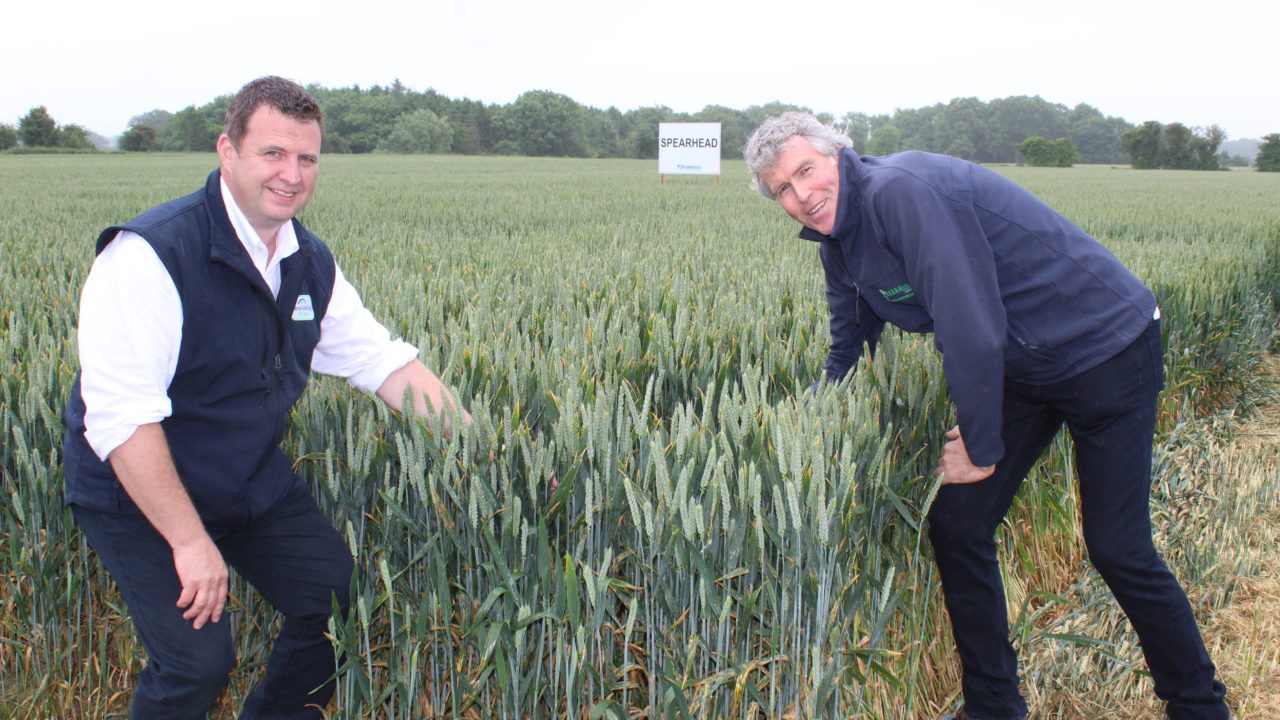In terms of tillage advice, Drummonds agronomists are strongly recommending that spring barley growers get on with their T2 spraying programmes.
The return to changeable weather conditions has greatly increased the risk of Ramularia, Net Blotch, Rhynchosporium and Powdery Mildew and other fungal diseases getting a foothold within crops.
“Generally speaking, all cereal crops are looking well at the present time,” Brendan Reilly of Drummonds explained.
“Where winter barley and wheat are concerned, most of the heavy lifting has been carried out, from an agronomy perspective.
“The potential to secure good yields from these cereal crops is, undoubtedly, there. What’s needed now is a decent spell of weather in order to secure full grain fill and to allow growers get on with the all-important harvest,” he added.
Cereal trials
Reilly spoke at the recent Drummonds Agronomy and Crop Open Day. Visitors to the event had the opportunity of touring the company’s 80ac crop trial site, close to the village of Termonfeckin in Co. Louth.
The company is currently trialling 250 cereal and oilseed rape varieties. The work undertaken at Termonfeckin includes the establishment of 1,000 plots plus a series of larger, commercial trials.
“The Drummonds agronomy team utilise the trial results as a means of assessing the latest seed varieties and crop chemistries,” Reilly said.
“In turn, this allows us to bring forward the best suited seed varieties and agronomic programmes in order to reflect the needs of customers and local growing conditions.
“All our trials are replicated for up to three growing seasons before bringing varieties or crop protection products to market.”
Tillage yields
The trial work at Termonfeckin is also helping to identify those aspects of agronomy that are limiting yield on Irish farms.
“Soil compaction remains a major challenge,” Reilly commented.
“Developing more effective rotations is also critical. Another challenge facing growers in tillage areas is the lack of high organic matter manures that are now available to them.
“Growing successful crops of cereals is all about feeding the soil.”
Applying fertiliser and specific crop micronutrients in a more efficient manner is a key focus of Drummonds’ trial work at the present time.
In this context the use of liquid nitrogen – a mix of urea and ammonium nitrate – is showing particular promise. Sulphur can also be included in a required formulation.
Benefits of this approach include: Increased accuracy of fertiliser application on headlands; a wider window for applications; the more uniform application of fertiliser; the attainment of higher crops yields; and more efficient use of sprayers within an agronomy programme.
Significantly, Drummonds’ trial work is also confirming the benefits of foliar potash applications to cereals as a means of effectively topping-up the most yield-limiting crop nutrient.
